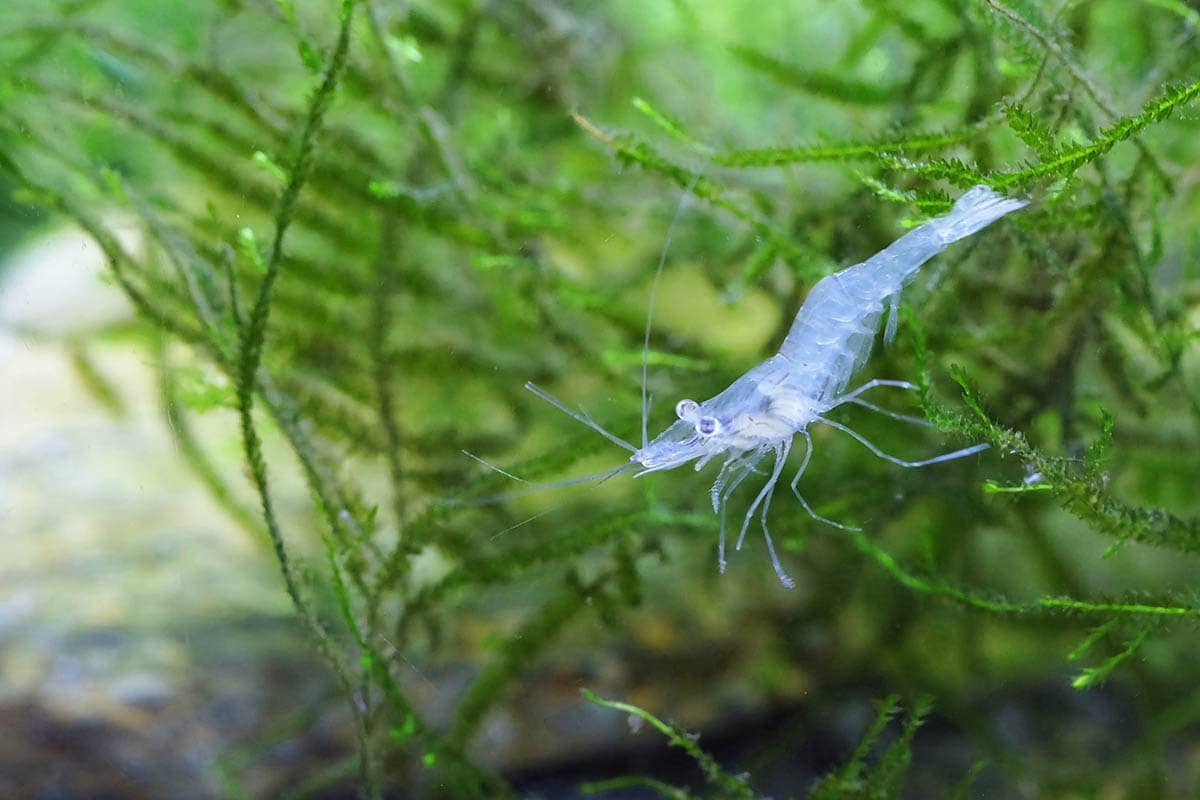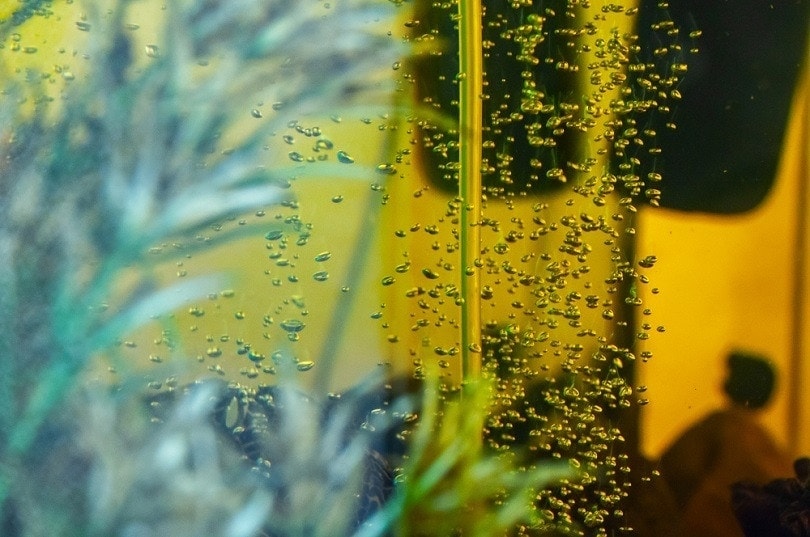How to Breed Mystery Snails in 5 Easy Steps (Vet Reviewed)
Updated on
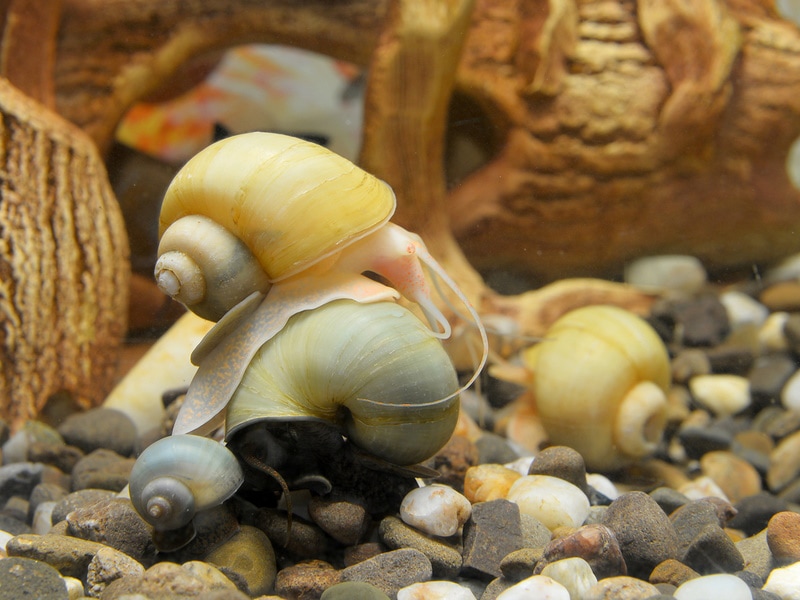
One of the most popular aquarium snails is the mystery snail, which can be found in a range of colors with an adult size of around 2 inches. Due to a mystery snail’s appearance, many owners are interested in breeding and raising mystery snail eggs and their hatchlings. This is both a fun and rewarding experience, especially if you want to produce new and possibly rare colorations. While mystery snails themselves are prolific breeders, sometimes they might need a little help.
Whether you are trying to breed specific varieties of mystery snails to produce a certain color, or you are wondering why your two mystery snails aren’t breeding, this guide will give you all the information you need.
Male vs Female Mystery Snails
Before breeding your mystery snails, you first need to ensure that you have sexually mature female and male snails. Unlike some other species, mystery snails are not hermaphrodites, but rather gonochoristic, and cannot breed without another mystery snail of the opposite gender.
| Male Mystery Snails | Female Mystery Snails |
| Have a penis sheath next to their gills that is opposite their siphon. | Two visible holes on either side, underneath the snail’s shell. |
| The penis sheath blocks one hole from being completely visible. | Lay eggs, which can be fertilized or unfertilized. |
| May have a more rounded shell opening. | Golden Mystery snails can have darker markings on the whorl of their shell. |
Mystery Snail Reproduction
Their inability to reproduce asexually is another reason these snails are a top choice for aquarium keepers who don’t want a snail that can produce a lot of eggs and babies on its own. However, female mystery snails can hold sperm after a successful mating period for several months and snails can change gender.
If you have a female mystery snail laying viable eggs after being kept alone in an aquarium, she was already fertilized by a male before you got her. Female mystery snails can also lay batches of unfertilized eggs that won’t end up hatching.
Most mystery snails will be ready to breed at 4 to 6 months of age or around 1 inch in size. When female mystery snails can reproduce, they will usually develop a slightly translucent appearance.
The best way to differentiate between a male and female mystery snail is to look for their reproductive organs underneath the lip of their shell.
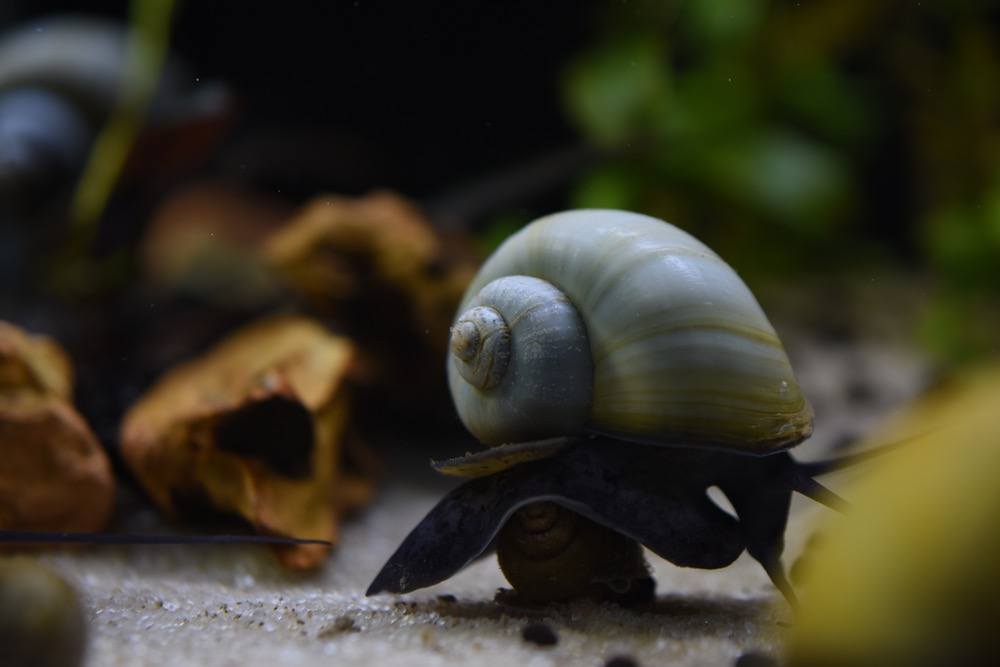
Preparing to Breed Mystery Snails
Aside from assuring that the mystery snails are kept in an ideal environment, you won’t have to do much to get mystery snails to mate. If you find that your adult mystery snails are not reproducing, the water quality could be an issue, or you only have groups of only male or female snails.
You have the option of creating a breeding tank for them. This will be a 5-to-10-gallon tank with a filter and heater, along with pristine water quality.
Provide plenty of vegetation to provide security for the male and female mystery snails and reduce the tank’s waterline 2–4 inches below the lid. This will be the area where the female will lay her eggs. If you do not lower the waterline or keep a secure aquarium lid on the tank, female mystery snails will try to escape to lay their eggs.
If you plan to breed them in their normal aquarium, make sure that the water conditions are good, and the waterline is slightly reduced with a fitted lid.
Mystery snail eggs can be a tasty snack for many species of fish, so you might need to remove the eggs from the lid or waterline and move them into a separate tank. However, this needs to be done with caution since the eggs can break or dry out easily.
What You Will Need
When breeding mystery snails, the following aquarium items will create an ideal breeding environment:
- An aquarium heater
- A tank with a secured lid
- A filtration system
- Calcium supplements
- Optional: A breeding tank
The 6 Steps to Breeding Mystery Snails
Now that you are ready to breed your mystery snails, here’s how you can do it in six easy steps:
1. Select two sexually mature mystery snails of your choice.
You will need to choose at least one mature female and male mystery snail over 4 months of age or around 1 to 2 inches in size. If you plan to breed specific colors of mystery snails, move those snails to a separate tank so that any snails with other colors don’t breed. Ensure that the two snails have been successfully identified as male and female, otherwise, they cannot reproduce.
In some cases, the male snails’ reproductive organs are deeper in the shell and can only be seen when the snails come out of their shell.
2. Do a water change and gradually raise the temperature.
Mystery snails can adapt to various temperatures if it is not too hot or cold for the species, but they seem to breed better at warmer temperatures. Gradually increasing the temperature in the breeding tank to around 75 to 78 degrees Fahrenheit may increase their breeding behaviors. This should be done using an aquarium heater, and only used in tanks with tropical fish that can handle warmer temperatures as well.
Doing 10% water changes every day for the next 3–5 days helps to keep the water fresh and dilute any waste and build-up in the tank that might be contributing to poor water quality.

3. Offer a calcium source and a nutritious diet.
Calcium is essential for mystery snails to form strong shells and they will seek out calcium sources in the wild. When keeping mystery snails in captivity, you should ideally offer them a source of calcium. Female mystery snails may need more calcium in their diet as they are using a lot of energy and nutrients to develop clutches of eggs.
However, not just any calcium source will work, as it needs to be safe for the snails and other aquarium inhabitants. Ground egg shells and cuttlefish bone from the bird section of a pet store will work as calcium supplementation for mystery snails.
Aside from calcium supplementation, you will need to ensure that your breeding pair is fed a nutritious diet with quality fish or aquatic snail food (must be copper-free), algae, and plain calcium-rich vegetables.
4. Lower the waterline.
Instead of laying eggs inside of the aquarium, female mystery snails will wander above the waterline to lay their eggs. This is why some female mystery snails can often be found outside of the tank if it doesn’t have a secure lid on them. The space between the lid and waterline should be 2–4 inches, and this is where you will find the clutches of eggs. This space provides the eggs with enough humidity and moisture to stay wet without being submerged.

5. Check for breeding behavior.
Mystery snails will generally breed on their own time, but you might be able to observe their breeding behavior. Male mystery snails will crawl onto the female’s shell, and try to insert his penis shaft. During this time, it may be difficult to pull the male away from the female. The mating process can take 1 to 5 hours, after which both snails will resume what they were doing before.
When the female mystery snail is ready to lay her eggs above the waterline, she finds a good spot between the lid and the waterline to lay the clutch. This typically happens during the evenings and at night when the environment is in darkness. So, you aren’t guaranteed to witness your female mystery snail laying eggs, but they will be noticeable once laid.
6. Observe the egg clutches.
Freshly laid eggs will be a pinkish-red color with a moist appearance. Each clutch contains around 50 to 200 small, rounded eggs clustered together in a cone-like shape. After a day or two, the eggs may have a whiter appearance. The eggs require both humidity and warmth to hatch, otherwise, they will dry out and crumble. However, they should not be submerged in the water. The eggs may take longer to hatch in lower temperatures, but quicker in warm and humid environments above 78 degrees Fahrenheit.
[Read the full tutorial on hatching mystery snail eggs here.]
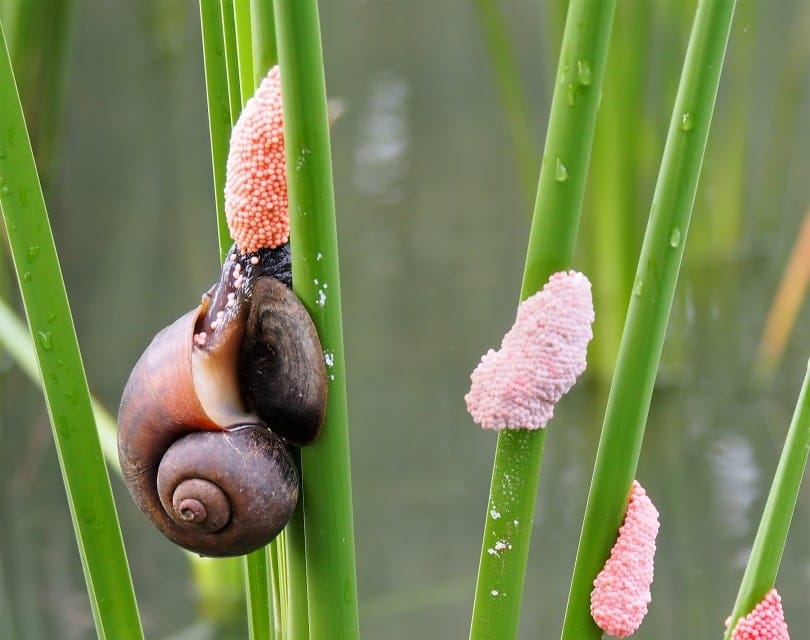
Conclusion
Mystery snails are fairly easy to breed, and the only help they might need from you is to ensure that their living conditions are ideal. After a successful breeding period, the clutch of eggs will hatch on average after 2–3 weeks, depending on the temperature of the tank. The hatchling snails will enjoy feeding on algae, and they can be kept in the same tank as their parents.
Featured Image Credit: badahos, Shutterstock




